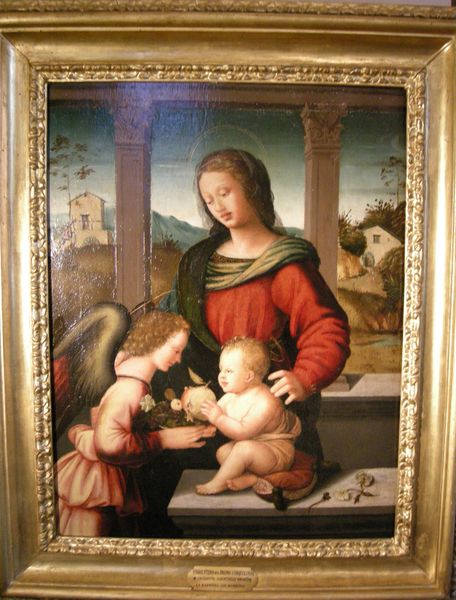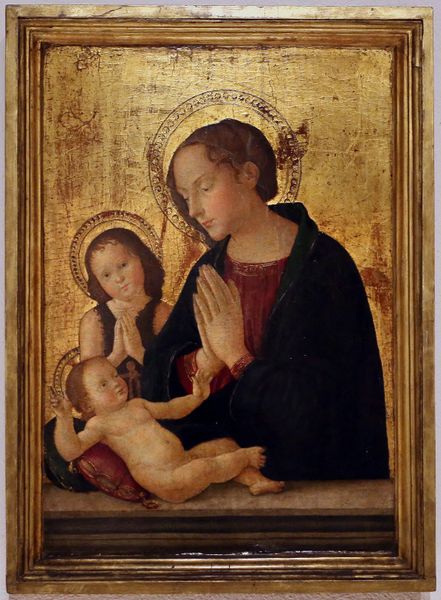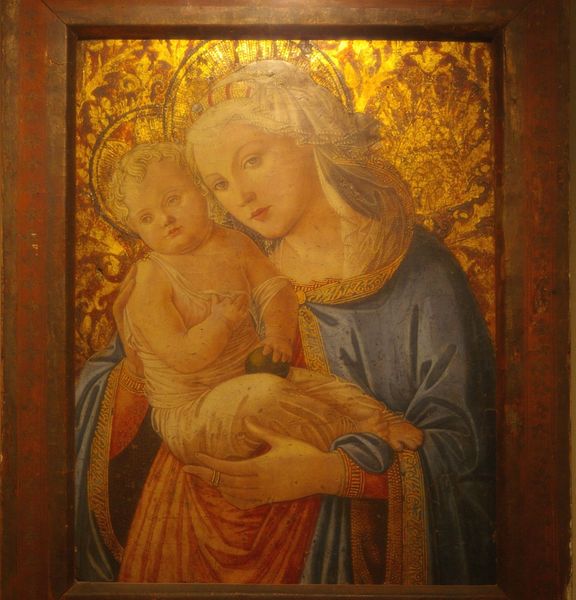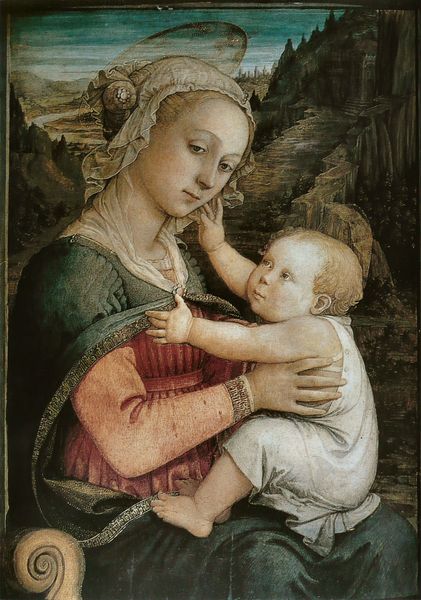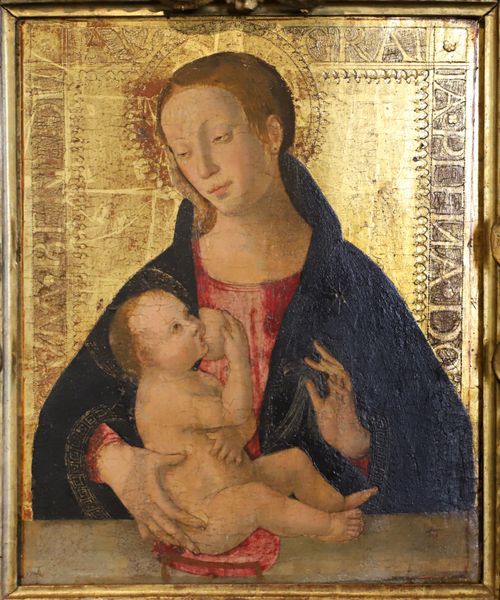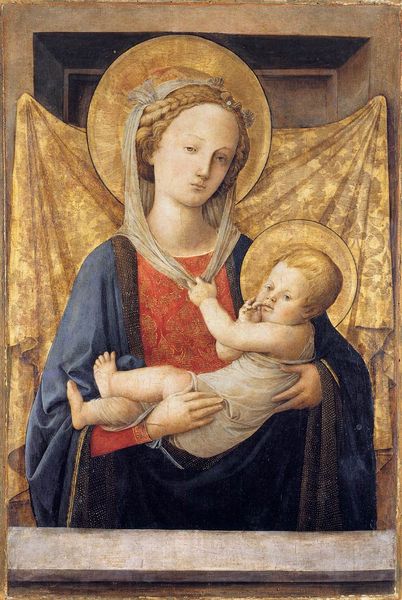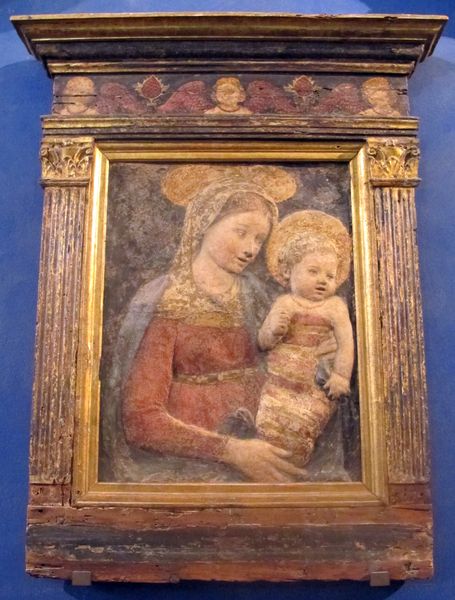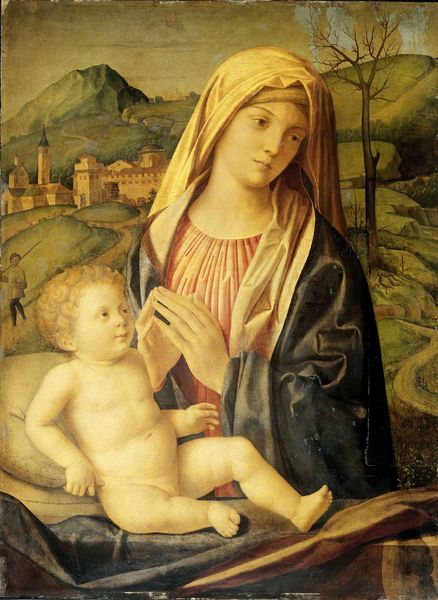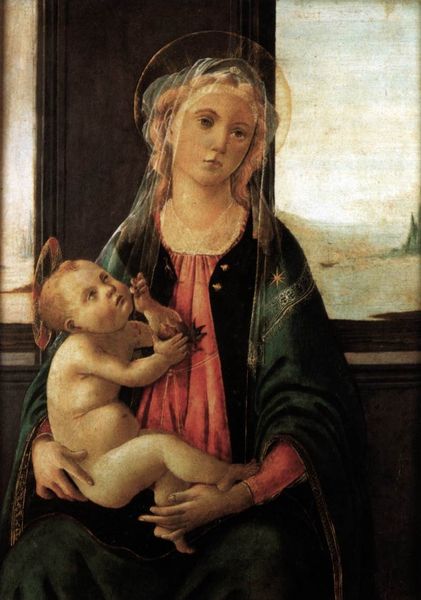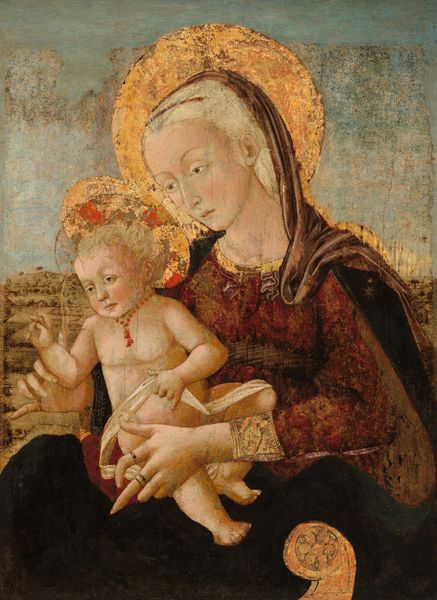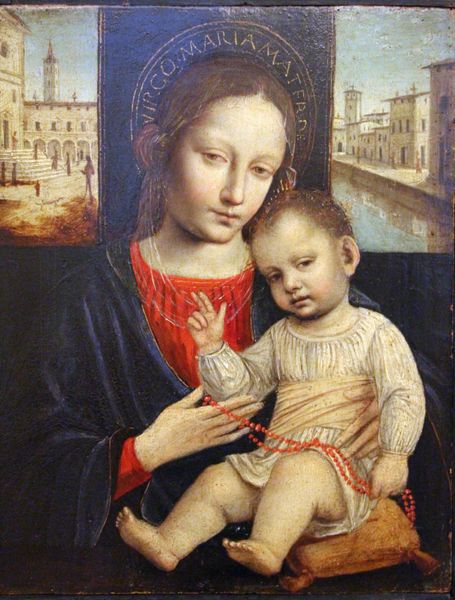
tempera, painting, relief
#
portrait
#
tempera
#
painting
#
relief
#
classical-realism
#
figuration
#
oil painting
#
history-painting
#
academic-art
#
italian-renaissance
#
portrait art
Copyright: Public domain
Editor: Here we have Madonna Col Bambino, believed to be from Desiderio da Settignano, executed in tempera as a relief painting. The softness of the figures almost feels dreamlike. What stands out to you in this piece? Curator: What I see here is an intentional invocation and disruption of patriarchal power dynamics. On one hand, we have a traditional representation of the Madonna and Child, reinforcing established religious and social norms. However, look at Mary’s downcast gaze, the intimacy between the figures. What does it say that their halos are demure? Isn’t it a radical departure from typical depictions that place emphasis on the divinity? Editor: So you're suggesting that Desiderio da Settignano might be making a commentary on established hierarchies, not just celebrating a religious icon? Curator: Exactly. Consider also that while tempera paintings of the Madonna and Child served as household objects—affirmations of status, symbols of prosperity, vehicles for personal piety, the decision to use the medium of relief speaks volumes. By choosing to produce the composition as relief, do we, as beholders, begin to understand the symbolic meaning intended? Does it make you think of the power of motherhood, of an almost tangible human connection that challenges purely divine interpretations? Editor: That's a perspective I hadn't considered before. Seeing it as a social statement embedded within a religious image really shifts the focus. Curator: The Italian Renaissance was far more complex than the ‘rebirth’ narrative lets on. How might acknowledging how gender, class, and even sexuality are operating within the visual rhetoric of the piece shift our appreciation? Editor: This has completely changed how I view Renaissance art. I will certainly approach this with more questions next time! Curator: Exactly. Art history is not a neutral telling; it’s an active engagement.
Comments
No comments
Be the first to comment and join the conversation on the ultimate creative platform.
